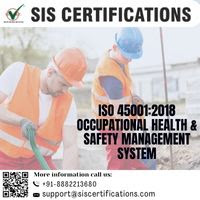7 Things You Need to Know About ISO 45001:2018

ISO 45001:2018 is an international standard that specifies requirements for an occupational health and safety (OH&S) management system. Here are seven key things you need to know about ISO 45001:2018: Focus on Occupational Health and Safety: ISO 45001 emphasizes the importance of providing a safe and healthy workplace for employees and others affected by an organization's activities. It aims to prevent work-related injuries, ill-health, and fatalities. Adoption of High-Level Structure: ISO 45001 follows the Annex SL framework, which is a common high-level structure for management system standards. This facilitates integration with other ISO management system standards like ISO 9001 (Quality Management) and ISO 14001 (Environmental Management). Process Approach: The standard promotes a process-based approach to managing occupational health and safety. This involves identifying relevant processes, their interactions, and establishing controls to manage associated risks.
.jpg)
